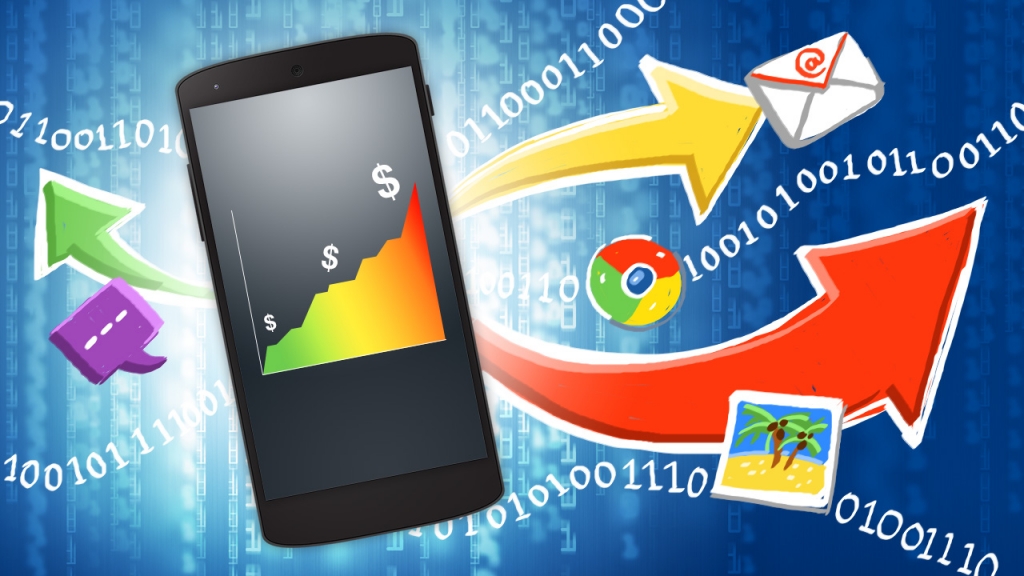
I recently updated my data rate is that, until recently, had barely 300 mb, honestly, I barely lasted a few days. I thought with this to move from work to home, friends’ houses, cafes, gym and other activities, this amount would be enough but … nothing is further from reality. Still, I had to pull wit and, of course POS network to learn some tricks to help me optimize these few Megs. You want to know how I did it.

A little common sense
Well, this seems typical of what they say but as first recommendation would be ideal out updates of applications and content over WiFi connections. Note that, in particular applications they can pose a data download between 15 and 50 Mb (depending on application). To avoid that this be done through your online data, do the following:
Android Google Play => Settings => “Updates Wifi only”.
Ios: Settings => iTunes => Off “Using mobile data.”
The app of your mobile operator is your friend
Practically most operators have its own application and since it can control (for better or worse way) consumption data we hold. Each and every operators are available in different Stores both Android and iOS and no, not that you forgot Windows Phone but this is something that the developers if they seem to have done.
Controls consumption using native application on your Smartphone
Whether Windows Phone, Android or iOS, have a feature that identifies how they are leaving your data. YouTube, Spotify, Maps … every one of them can be controlled through these monitors so they are a good tool to control the mobile consumer. For example in the case of Android, we go to Settings => Data usage. In the case of iOS will be in the Settings => Mobile Data for Windows Phone section and have a handy app called sensor data. This will allow us to carry out the possibilities of traffic limit that I have mentioned.
Still, if these monitors are not to your liking, you can use alternatives. This not only notifies you if surpass the limit of data that you have marked, but you also measures the consumption of the same.
Upload your files automatically
iCloud, Dropbox, Drive … All these applications make automatic copies of pictures or videos you do with your smartphone, often without knowing or even had this option enabled. It does not seem a bad option especially given that I am very prone to losing photographs but, but have a close connection WiFi, these increases may lead to the premature death of your data rate. To disable this option you only have to go to each and every one of you to use and disable automatic uploads pictures or videos. It is best that this rise should do manually, once you have gotten a good WiFi connection.
YouTube and Spotify
Probably two applications more multimedia content used in our smartphone and, as you know, conducted a large consumption of data. This is not something we have overlooked the developers of these applications so you offer the option of performing playback of content “off line”. Spotify allows you to download playlists to listen to them later. YouTube for their part, has the “watch later” why And if you have WiFi, it will create a playlist “off line”, all in order to not consume if you already battered data rate.
Are you going away?
Google Maps has always been my traveling companion on journeys by car and I am sure also that of many of you. Well, you do not become an idea of the data that is able to consume this application so that I discovered that we are able to avoid it. Before starting your trip, you can download to your smartphone those maps that you will need. Do not think that this is carried out by a complex modification but through the “Maps” application is a very simple function.
Of course, do not forget to be connected to a WiFi network and, once inside the app, look for the place on the map you want to go. Once shown, just write “ok maps” and the application will automatically start downloading the map that is on the screen. Once downloaded, you’ll have available in the history Maps and access at the same cost-free data.
Essential: Disable the automatic download of pictures and videos on Facebook, WhatsApp, Twitter and Instagram
Needless to say, these three applications are the most used by the community in Facebook so we avoid the autoplay, accessing their settings and disabling it. Whatsapp For a little more of it and it is also advisable to turn off automatic downloading of images, videos and voice notes. All this is deactivated in the application settings. The same will in Twitter and Instagram though, as you know, the latter will be a higher consumption as it is based solely on photography and video.
One final note
Personally, I’m one of those people who so my profession as my nature, I tend to digital Diogenes. I apply it to the subject at hand, I have an unhealthy habit to discharge any moderately attractive application that I see in my app store, but ultimately do not end up using it more than a few times. Therefore, I recommend you use not only for data but also for management and performance space, delete all applications involving an irresponsible use of your data rate.
